Ireland has given the world many inventions, but our greatest gift to the world has to be Halloween.
All Saints Day, or All Hallows, was created by the Roman Catholic church in the 8th century when they designated the first day of November as a day of commemoration for those Saints that did not have a specific day of remembrance. The night before became known as All Hallows' Eve which over time became known as Halloween.
However, Halloween in Ireland has been celebrated for centuries and first originated from the festival of Samhain which dates back over 2,000 years.
The Celtic Festival of Samhain
Samhain is a pagan religious festival originating from an ancient Celtic spiritual tradition. In modern times, Samhain (a Gaelic word pronounced “sow-win”) is celebrated from October 31 to November 1 to welcome in the end of the harvest and usher in “the dark half of the year."

Love Irish history? Share your favorite stories with other history buffs in the IrishCentral History Facebook group.
The ancient peoples of Ireland believed that at Samhain the barriers between the physical world and the spirit world break down. This allowed more interaction between humans and the veil of the dark otherworld.
The ancient Celts divided the year into two halves, the lighter half and the darker half, and held four celebrations to mark the changing seasons:
- Imbolc - celebrated halfway between the winter solstice and the spring equinox
- Beltane - halfway between the spring equinox and the summer solstice
- Lughnasa - halfway between the summer solstice and autumn equinox
- Samhain - halfway between the autumn equinox and winter solstice
Samhain was the most significant of these four sacred festivals, as it was thought to have represented the Celtic New Year.
For the ancient Celtic people of Ireland, time began in darkness, with each 24-hour day commencing at dusk. Samhain ushered in the darker half of the year, representing the end of one year and the beginning of the next.
Samhain and All Hallows' Eve have fused together to give us our modern Halloween.
In Ireland, Halloween has evolved to become a very commercialized event, so perhaps it’s time to reflect on how Halloween used to be celebrated in days gone by.
So, how was Halloween celebrated in Ireland?
Baking the barmbrack cake
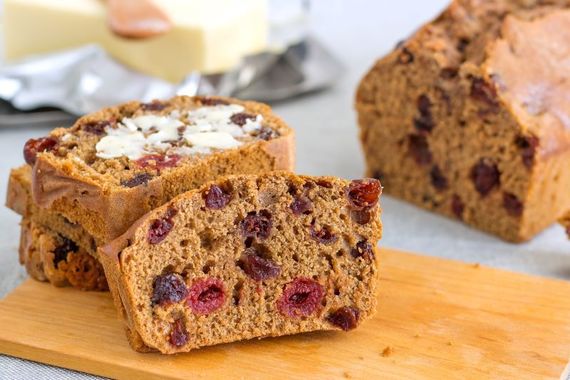
The traditional Halloween cake in Ireland is the barmbrack which is a fruit bread. Each member of the family would get a slice. Great interest was taken in the outcome as there was either a piece of rag, a coin and a ring in each cake.
If you got the rag, then your financial future was doubtful. If you got the coin, then you can look forward to a prosperous year. Getting the ring was a sure sign of impending romance or continued happiness. Check out a barmbrack recipe here.
The colcannon feast
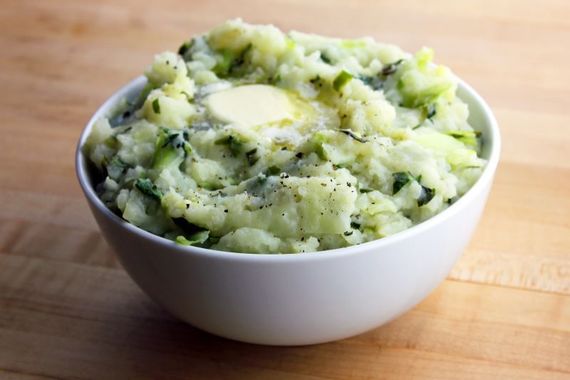
The traditional Halloween dinner in Ireland was Colcannon. If you have never tasted it then it is time you did. Creamy mashed potatoes, fresh, crunchy curly kale, a bit of spring onions, and pats of butter. To make it more exciting clean coins were wrapped in baking paper and placed in the potato for children to find and keep. You can learn how to make colcannon here.
The ivy leaf
On Halloween night each member of the family takes a perfect ivy leaf and places it into a cup of water. This is then left overnight. If, in the morning, a leaf is still perfect and has not developed any spots then the person who placed the leaf in the cup can be sure of 12 months health until the following Halloween. If not.....?
The Halloween pumpkin
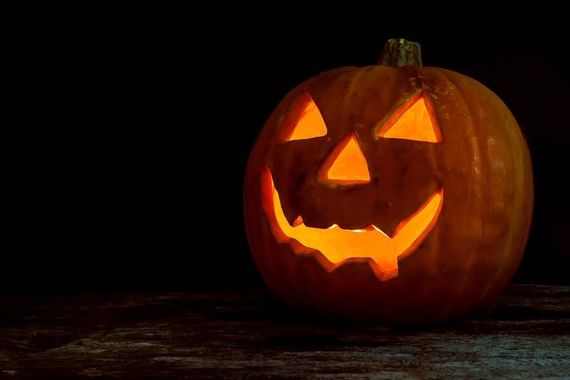
Carving Pumpkins dates to the eighteenth century and to the legend of an Irish blacksmith named Jack who colluded with the Devil and was denied entry into Heaven. He was condemned to wander the earth but asked the Devil for some light. He was given a burning coal ember which he placed inside a turnip that he had gouged out.
And so the tradition of Jack O'Lanterns was born - the bearer being the wandering blacksmith - a damned soul.
Villagers in Ireland hoped that the lantern in their window would keep the wanderer away.
As the Irish emigrated in their millions to America, there was not a great supply of turnips, so pumpkins were used instead.
Dressing up at Halloween
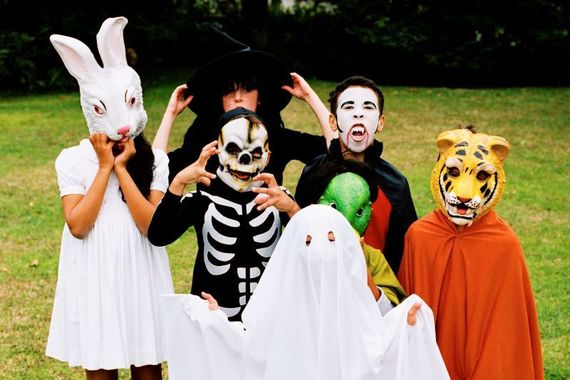
This tradition of wearing costumes also dates to Celtic times and Samhain. On that night when the veil between the living and the dead was lifted Celtic Druids would dress up in elaborate costumes to disguise themselves as spirits and devils. This was to ensure that if they encountered other devils and spirits during the night, they would be able to avoid being carried away to the underworld.
Perhaps this explains why witches, goblins and ghosts remain the most popular choices for Halloween costumes.
Snapping and bobbing for apples
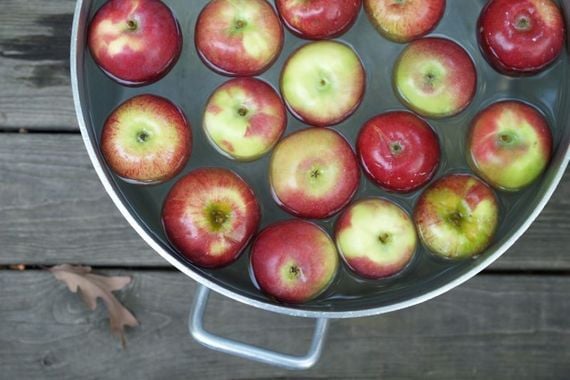
Halloween was a time for games, the most popular was Snap Apple. This is played by tying strings around apples and suspending them from the ceiling.
Some people used a tree branch, or even the washing line.
You may need to adjust the length once your players arrive, so they are at mouth height or lower.
Each player must attempt to eat the entire apple without touching it with their hands.
Another prize can be given to the person who gets the first bite out of their apple. It is quite tricky, and you may want to change apples for donuts for younger children.
A variation of the game can be when you add apples to a basin of water and watch the fun as children attempt to retrieve the apples!
The Halloween bonfire
A Halloween bonfire in Crumlin in Dublin. (RollingNews.ie)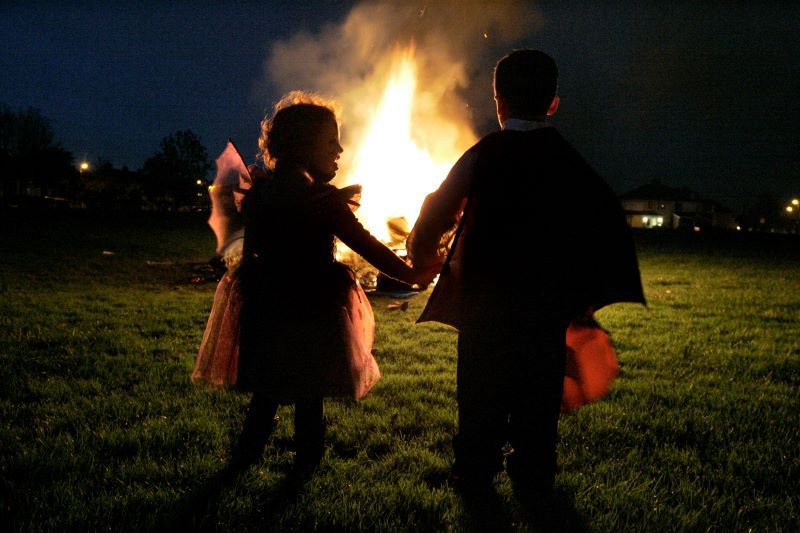
Halloween was one of the Celt 'fire' celebrations and the bonfire was a key part of the Samhain festival.
All fires were to be extinguished at the start of Samhain. The druids, the ancient Celtic priests, would light a new bonfire, into which the bones of the animal sacrifices would be tossed (this “bone-fire” gives us our modern word 'bonfire'). From this fire, others would light their torches and carry the flames home to relight their own hearths.
In later years, the fire was a tradition to encourage dreams of who your future husband or wife is going to be.
The idea was to drop a cutting of your hair into the burning embers and then dream of your future loved one.
Your future husband

Blindfolded local girls would go out into the fields and pull up the first cabbage they could find. If their cabbage had a substantial amount of earth attached to the roots, then their future loved one would have money. Eating the cabbage would reveal the nature of their future husband - bitter or sweet!
Another way of finding your future spouse is to peel an apple in one go. If successfully done the single apple peel could be dropped on the floor to reveal the initials of your future intended.
Remember the fairies
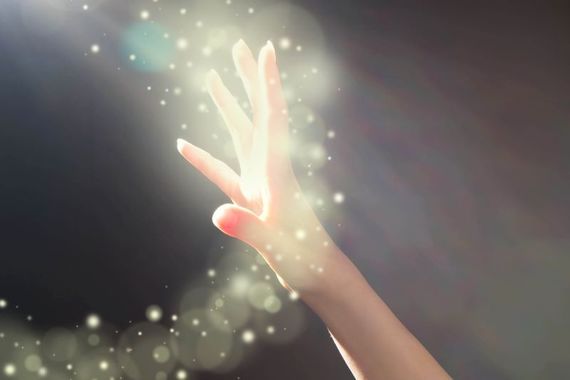
Finally, remember and protect yourself from the fairies whose job is to collect as many souls as they can at Halloween.
It was said that if they met a person who threw the dust from under their feet at the Fairy then they would be obliged to release any souls that they held captive.
Holy water was sometimes anointed on farm animals to keep them safe during Halloween night. If the animals were showing signs of ill health on All Hallows Eve, then they would be spat on to try to ward off any evil spirits.
I hope you have a safe and happy Samhain, Halloween, and All Souls Day wherever you are.
*Originally published in October 2021. Updated in October 2023.
This article was submitted to the IrishCentral contributors network by a member of the global Irish community. To become an IrishCentral contributor click here.
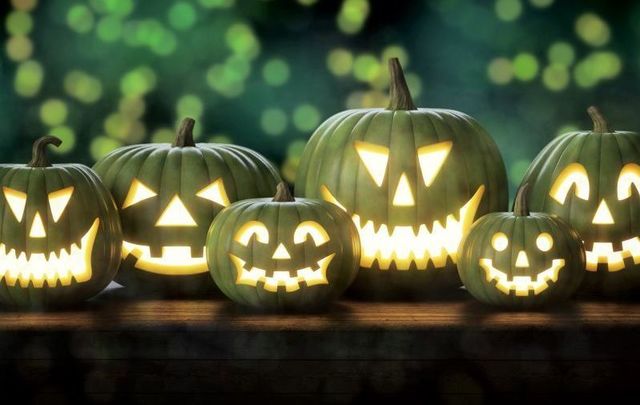



Comments